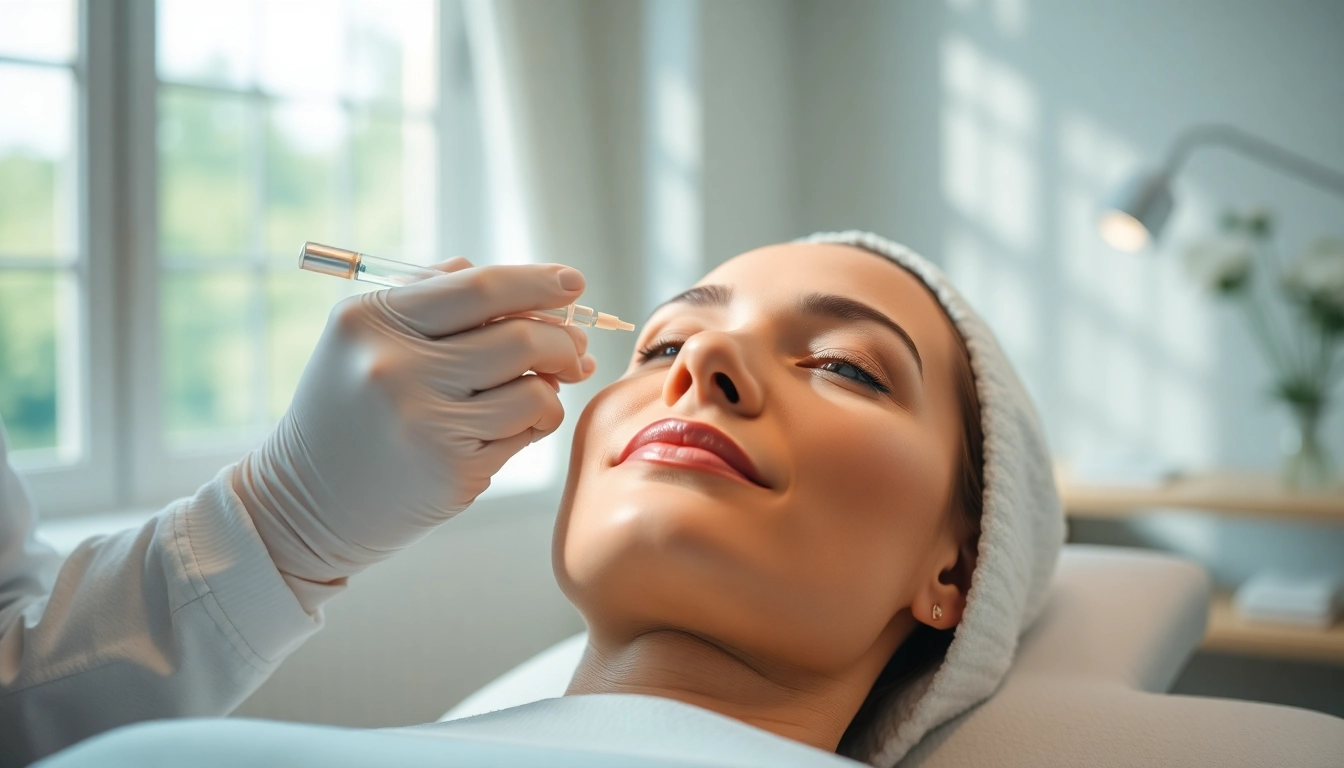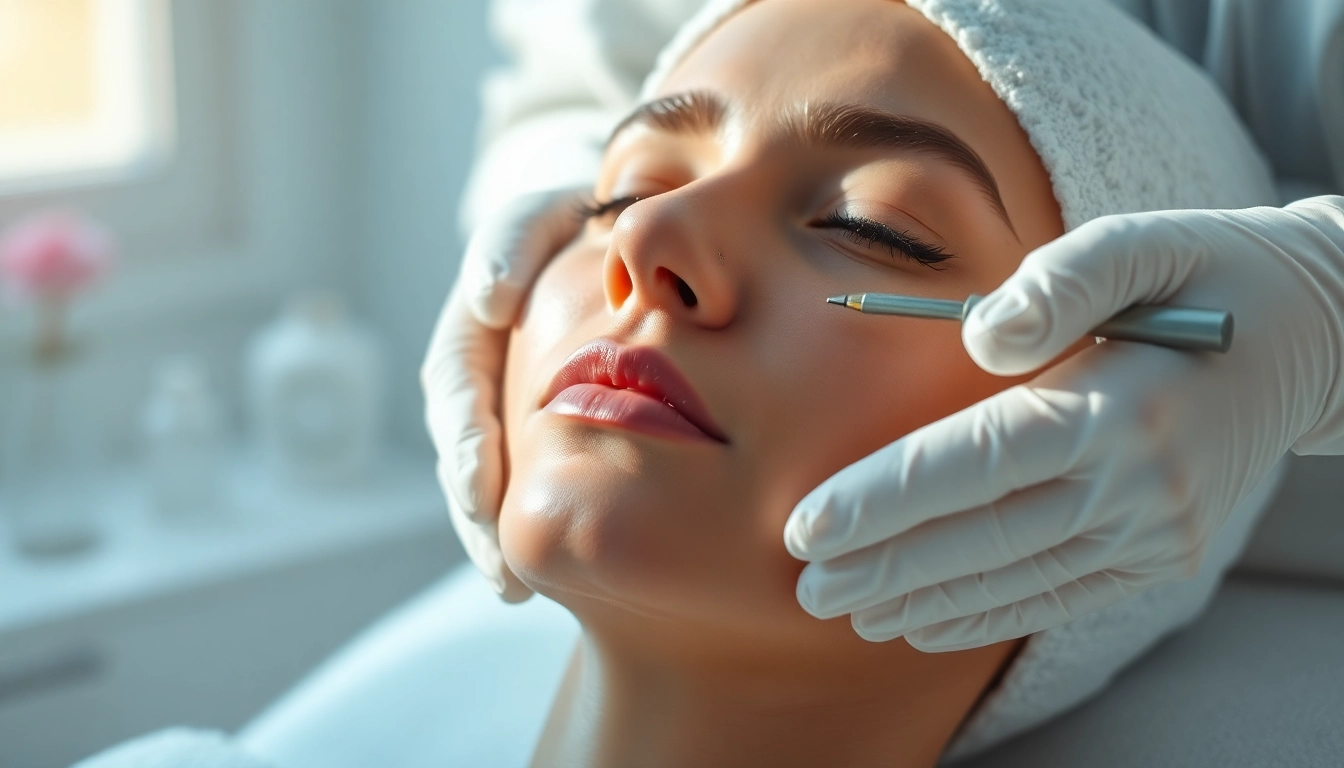Understanding Botox and Fillers
What are Botox and Fillers?
Cosmetic procedures have gained significant traction over the past few decades, and among the most popular options are botox and fillers. While both are utilized to enhance appearance, they serve different functions and are employed based on individual aesthetic goals.
Botox, scientifically known as botulinum toxin type A, is a neuromodulator that temporarily paralyzes muscles to reduce the appearance of dynamic wrinkles, which are caused by facial movements like smiling or frowning. On the other hand, dermal fillers are substances injected into the skin to restore lost volume, smooth wrinkles, and improve facial contours.
In essence, Botox is primarily used for smoothing out wrinkles around the forehead, eyes, and mouth, whereas fillers can address volume loss in areas like cheeks and lips, offering a more youthful and plump appearance.
How Botox Works: Mechanism and Benefits
Understanding how Botox works requires a look at its mechanism. When injected into specific facial muscles, Botox blocks nerve signals, effectively relaxing these muscles. This paralysis reduces the visibility of wrinkles and fine lines, leading to a smoother appearance. The treatment typically takes only a few minutes, is minimally invasive, and requires no downtime, making it an appealing option for many individuals.
One of the key benefits of Botox is its effectiveness in treating various types of wrinkles, including:
- Forehead lines: Horizontal lines that form with age and facial expressions.
- Crow’s feet: Fine lines that develop at the outer corners of the eyes.
- Glabellar lines: Vertical lines between the eyebrows, often referred to as frown lines.
Aside from cosmetic benefits, Botox has various medical applications, including treatment for migraines, excessive sweating, and certain muscle disorders, which further showcases its versatility.
Types of Fillers: Choices and Applications
Dermal fillers come in several varieties, each crafted from different materials and designed for specific applications.
The most common types of fillers include:
- Hyaluronic Acid Fillers: These are the most popular and include brands like Juvederm and Restylane. Hyaluronic acid, a naturally occurring substance in the body, adds volume and hydration to the skin.
- Calcium Hydroxylapatite Fillers: Found in products like Radiesse, these fillers are thicker and provide structural support, often used in deeper wrinkles and facial contours.
- Poly-L-Lactic Acid Fillers: Known as Sculptra, these stimulate collagen production, leading to gradual improvements in skin texture and volume over time.
- Permanent Fillers: Composed of materials that are not absorbed by the body, these offer long-lasting results but come with higher risks of complications.
Selecting the right filler often depends on the treatment area and desired outcomes, so consulting with a qualified practitioner is essential.
Evaluating Your Candidacy
Who is an Ideal Candidate for Botox and Fillers?
Determining candidacy for Botox and fillers involves a comprehensive assessment of an individual’s health, aesthetic goals, and skin condition. Ideal candidates are typically:
- Adults aged 18 and older.
- In good general health without underlying muscle or nerve disorders.
- Seeking subtle enhancements rather than drastic changes.
Both procedures can be tailored to suit various skin types, making them accessible to a broad demographic. However, pregnant or breastfeeding individuals and those with certain medical conditions may need to refrain from these treatments.
Assessing Skin Type and Needs
Before proceeding with Botox or filler treatments, it’s crucial to assess skin type, elasticity, and any specific concerns. For instance:
- Oily Skin: May benefit from treatments focused on oil control and texture improvement.
- Dry Skin: Hydrating fillers can enhance volume and hydration.
- Aging Skin: Combination treatments may be recommended to address multiple concerns.
Understanding your skin’s unique characteristics will guide the choice of products and application methods, ensuring optimal results.
Potential Risks and Considerations
While Botox and fillers are generally considered safe, there are potential risks and side effects associated with their use, including:
- Bruising and swelling at the injection site.
- Allergic reactions in rare cases.
- Asymmetry or undesirable results if not performed by a qualified practitioner.
It’s vital to discuss these risks with your provider during the consultation phase. They will help manage expectations and address any concerns, ensuring you make an informed decision.
The Procedure: What to Expect
The Consultation Process: Preparing for Treatment
A thorough consultation is the first step in achieving the desired results with Botox and fillers. During this initial appointment, your practitioner will evaluate your skin, discuss aesthetic goals, and recommend the most suitable treatments. Additionally, you’ll be asked about your medical history, any medications you are taking, and previous aesthetic procedures.
Preparing for treatment entails:
- Avoiding blood thinners, alcohol, and anti-inflammatory medications for a few days prior to the procedure to minimize bruising.
- Communicating any concerns or allergies you may have.
This preparatory phase is crucial as it sets the foundation for a safe and effective outcome.
Step-by-Step Guide to Botox and Fillers Application
Both Botox and filler procedures typically follow a similar procedural structure, albeit with different techniques. Here’s what you can expect:
- Preparation: The treatment area will be cleaned, and a topical anesthetic may be applied for comfort.
- Marking: Your practitioner may mark specific injection sites to ensure precision.
- Injection: Botox is injected into targeted muscles, while fillers are deposited under the skin to achieve volume and contour.
- Post-Treatment Care: You’ll receive instructions on aftercare, which may include avoiding strenuous exercise and not touching the treated areas.
Most procedures take between 15 minutes to an hour, depending on the number of areas treated.
Aftercare and Recovery Tips
Post-procedure care is essential for achieving the best results and minimizing any potential side effects. Key aftercare instructions typically include:
- Avoiding excessive sun exposure and using sunscreen on treated areas.
- Refraining from strenuous activities or exercise for at least 24 hours.
- Not lying down for a few hours post-treatment to reduce the risk of migration of injected products.
Keeping these rules in mind will optimize the benefits of your treatment and promote a swift recovery.
Results and Expectations
What Results to Anticipate from Botox and Fillers?
Results from Botox and fillers can vary in terms of immediacy and longevity. Botox results typically manifest within three to five days post-injection, peaking around two weeks. Patients can expect a marked decrease in the appearance of wrinkles, leading to a refreshed look.
Fillers, on the other hand, often provide immediate results, with volume collectively enhancing facial contours or filling in lines right after treatment. Depending on the type of filler used, results can last from six months to two years, with many clients opting for maintenance treatments.
Duration of Effects and Maintenance
Understanding the duration of effects plays a critical role in maintaining aesthetic results. Botox typically needs to be reapplied every three to four months, as its efficacy diminishes with the body’s natural absorption process. Fillers, depending on their formulation, may last longer; for instance:
- Hyaluronic Acid Fillers: 6-12 months.
- Calcium Hydroxylapatite Fillers: Up to 18 months.
- Poly-L-Lactic Acid Fillers: Results can last upwards of two years, as they stimulate collagen production.
Regular follow-up appointments with your practitioner can help manage treatments effectively, ensuring continued satisfaction with your results.
Real Client Testimonials and Transformations
Hearing from those who have undergone Botox and filler treatments can provide valuable insights into expected outcomes. Many clients report significant confidence boosts and improved self-esteem following their procedures. For instance:
“After my first Botox experience, I couldn’t believe the transformation! My forehead was smooth, and I felt years younger. The results lasted longer than I anticipated, and I’m a regular client now.” – Sarah, 45
Another client, who opted for fillers in the cheeks and lips said:
“I was amazed at how natural I looked. Friends complimented me, saying I appeared so refreshed. The procedure was quick, and aftercare was straightforward.” – John, 38
These testimonials reflect the emotional and physical enhancements many patients experience, adding a motivational element for those considering these treatments.
Choosing the Right Provider
How to Find a Certified Practitioner
Selecting a skilled and reputable practitioner is one of the most crucial steps to ensure the safety and satisfaction of your botox and fillers experience. Consider the following tips when searching for a provider:
- Check credentials: Ensure the practitioner is board-certified and has specific training in cosmetic injectables.
- Read reviews: Look for patient testimonials and before-and-after photos to assess their experience and results.
- Schedule a consultation: Meeting with the practitioner allows you to gauge their expertise and comfort level.
Choosing a provider based on these factors significantly increases the likelihood of a positive outcome.
Questions to Ask During Consultation
During your consultation, it’s essential to ask the right questions to ensure a thorough understanding of the procedure and what to expect. Here are key questions to consider:
- What type of products do you use for Botox and fillers, and why?
- How many procedures have you performed?
- Can you show me before-and-after photos of previous patients?
- What are the potential side effects I should be aware of? How will you address them?
- What is the expected recovery time?
Well-structured communication with your provider will ensure that you feel reassured and informed leading up to your procedure.
Comparing Costs and Value
Cost is often a significant factor for individuals considering Botox and fillers. Prices can vary based on several factors, including:
- Geographical location of the practice.
- Experience and qualifications of the practitioner.
- Type and amount of product used.
While it may be tempting to choose lower-cost options, prioritizing quality and safety should remain paramount. Request detailed cost breakdowns and inquire about any hidden fees to avoid surprises later.
In summary, investing in a reputable provider is essential to ensure not just aesthetic outcomes but also your safety and satisfaction.



